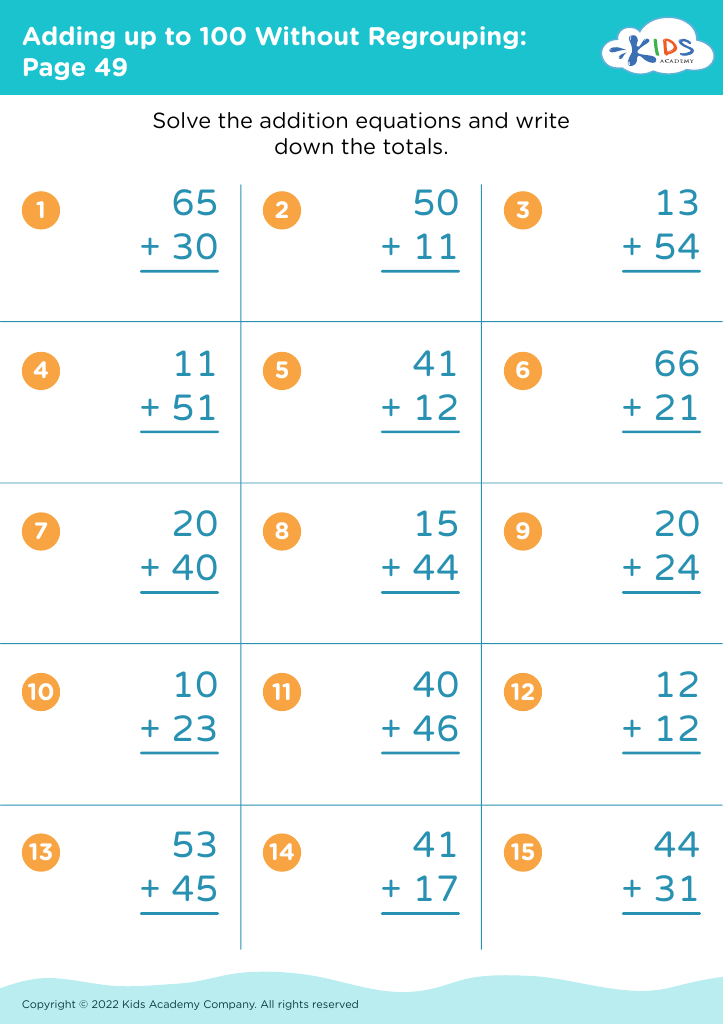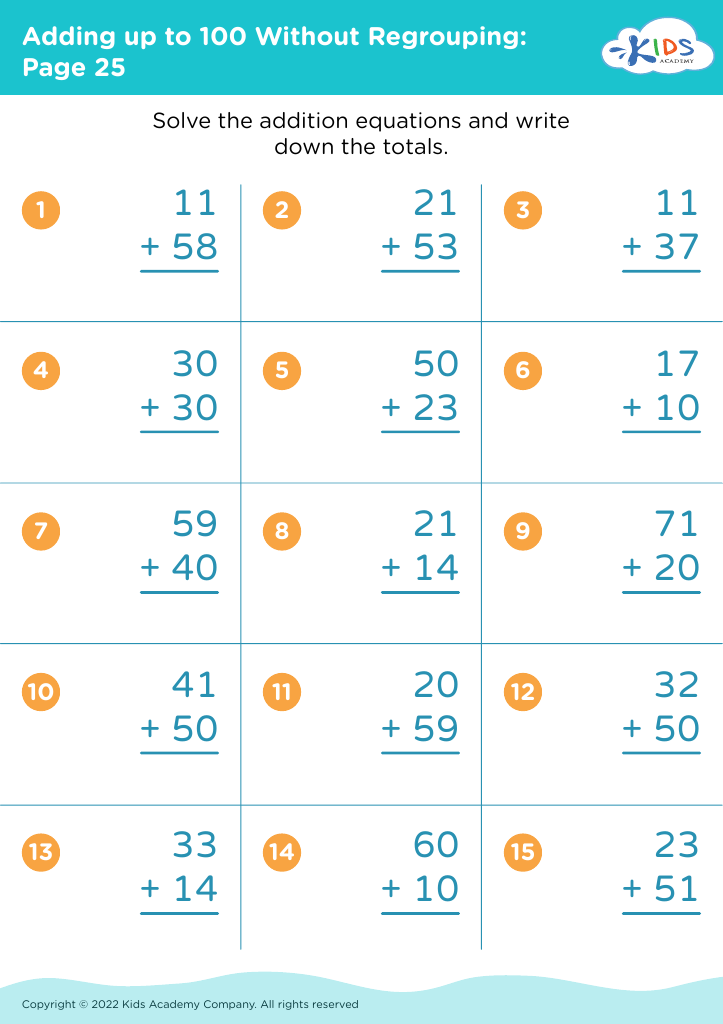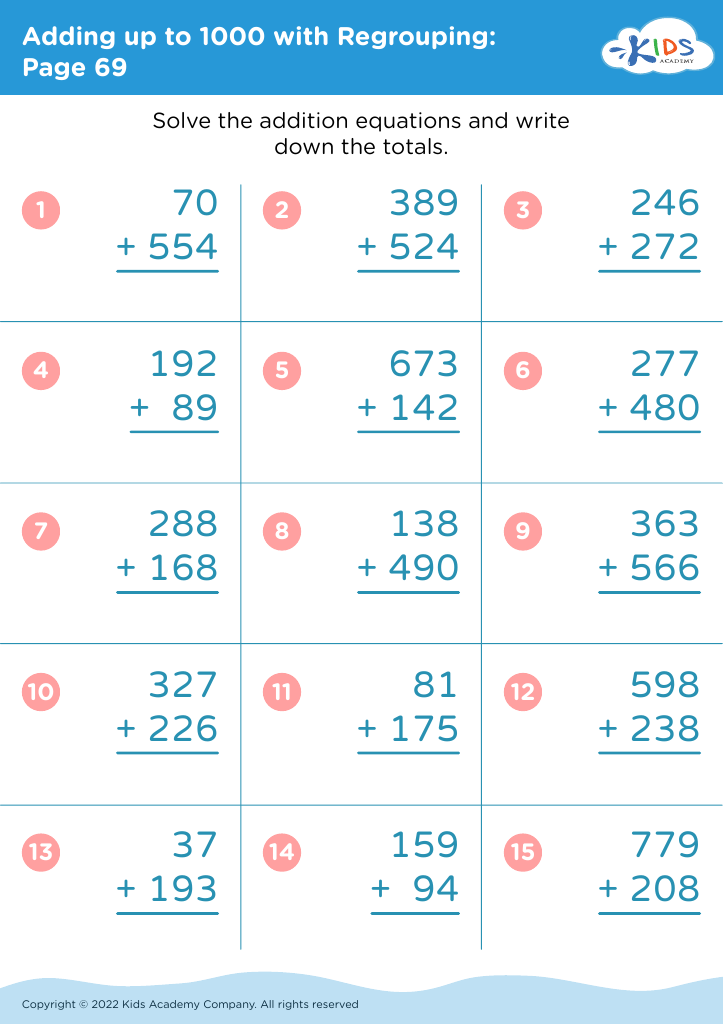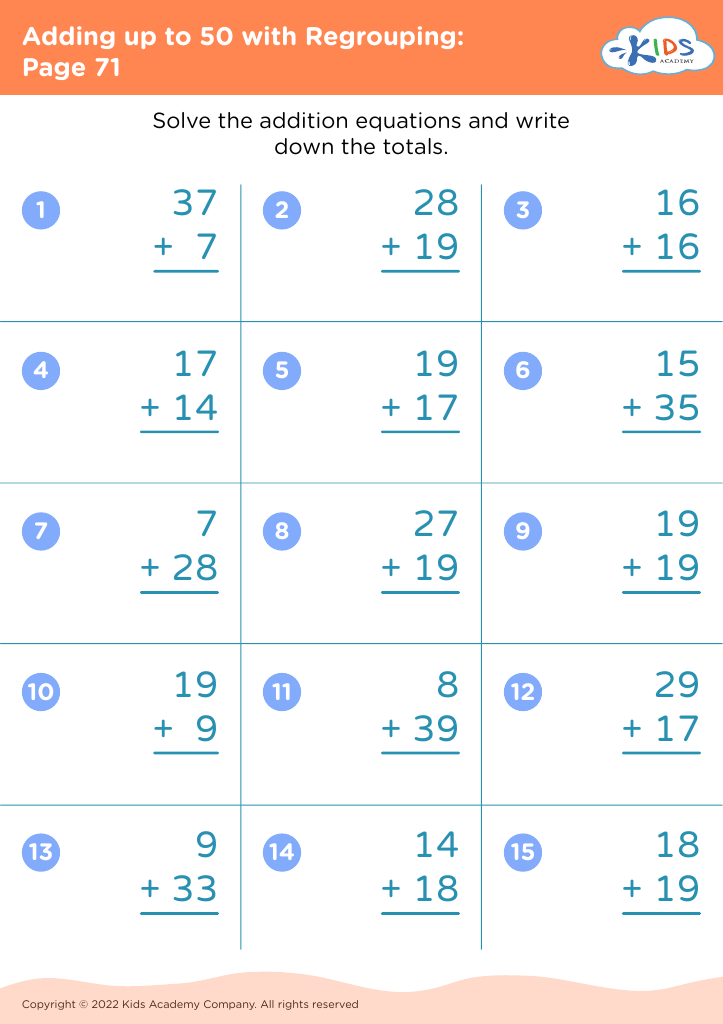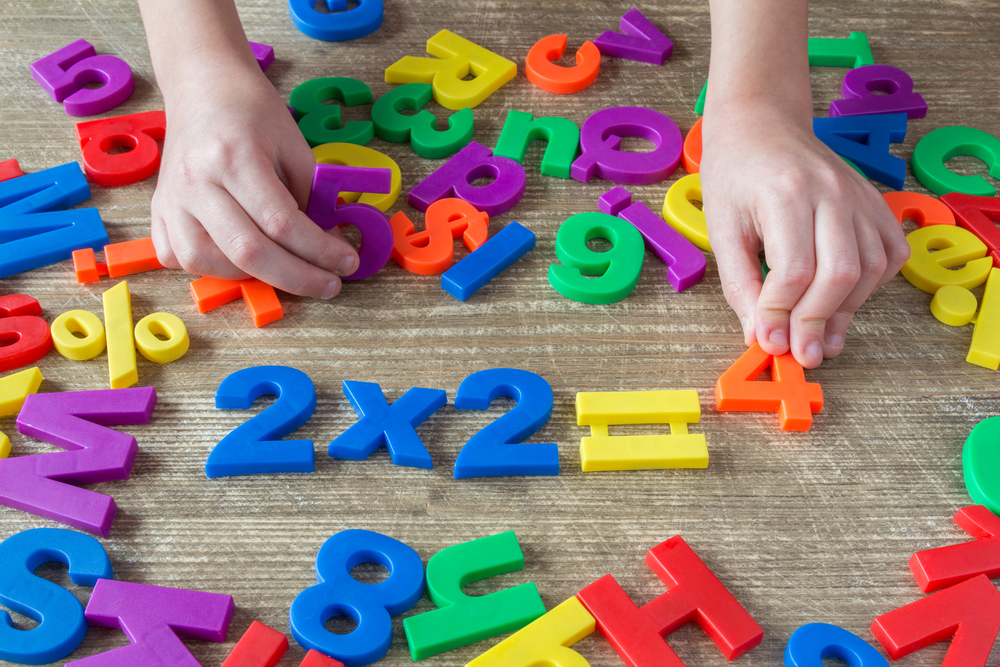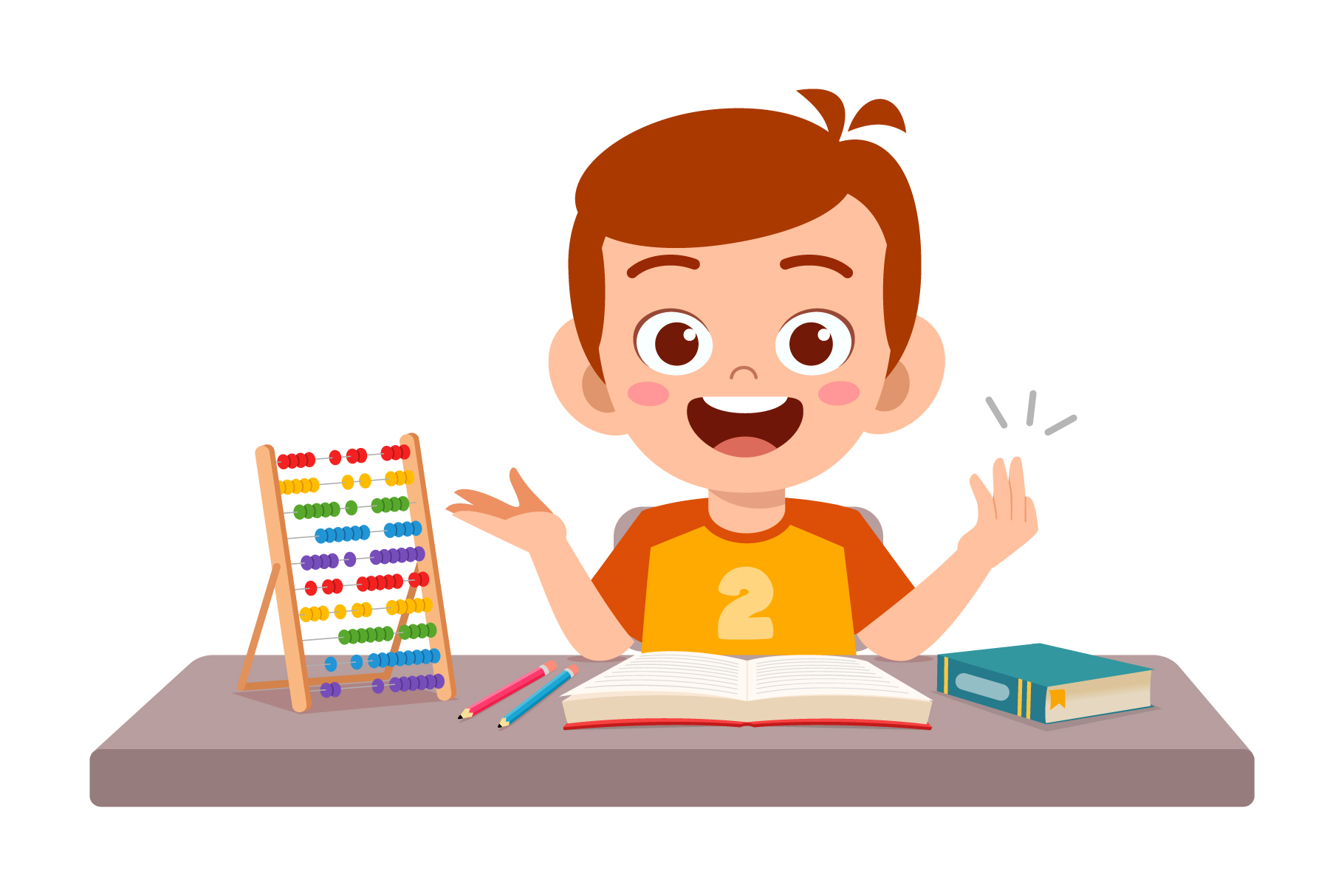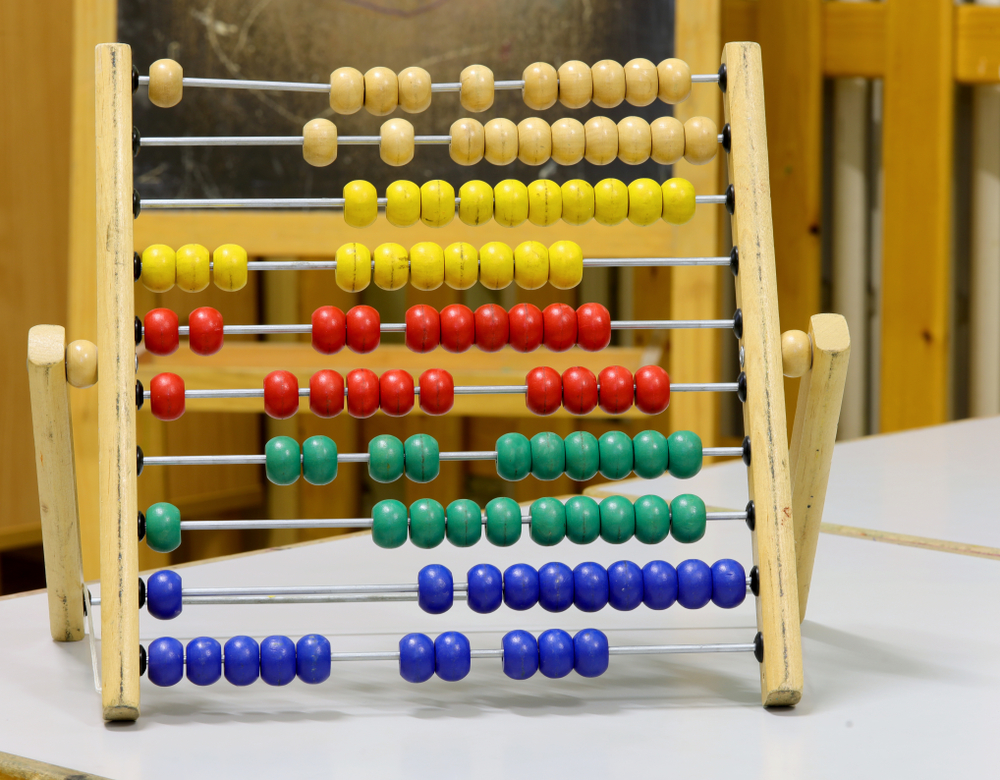Visual discrimination Addition Worksheets for Ages 7-9
4 filtered results
-
From - To
Enhance your child's math skills with our Visual Discrimination Addition Worksheets designed specifically for ages 7-9. These engaging and educational worksheets help children practice addition while sharpening their ability to visually distinguish between numbers and symbols. Perfect for building foundational skills, each printable exercise features colorful and fun illustrations to keep students motivated and focused. Ideal for use at home or in the classroom, our worksheets foster improved mathematical abilities and strong visual discrimination skills. Give your child the tools they need to excel in math with Kids Academy's expertly crafted resources. Download now for endless learning fun!
Visual discrimination in addition is crucial for children aged 7-9 as it aids in their overall cognitive development and academic success. At this developmental stage, children transition from basic arithmetic to more complex math concepts. Visual discrimination allows them to differentiate numbers and mathematical symbols accurately, which is essential for performing addition correctly.
Parents and teachers should prioritize this skill because it enhances children's ability to recognize patterns, sequences, and differences—key components in problem-solving and logical thinking. A child proficient in visual discrimination is less likely to confuse similar-looking numbers (like 6 and 9), reducing errors in calculations and boosting confidence in their math abilities.
Furthermore, strong visual discrimination skills support better reading and comprehension. Recognizing and differentiating letters and words visually is similar to distinguishing numbers and symbols. Thus, honing this skill has a dual benefit: it strengthens both mathematical aptitude and literacy.
By encouraging activities that improve visual discrimination, such as puzzles, matching games, and targeted practice, parents and teachers lay a foundation for advanced learning. This investment in a child’s early education fosters a positive attitude towards math and equips them with essential skills for future academic challenges.
